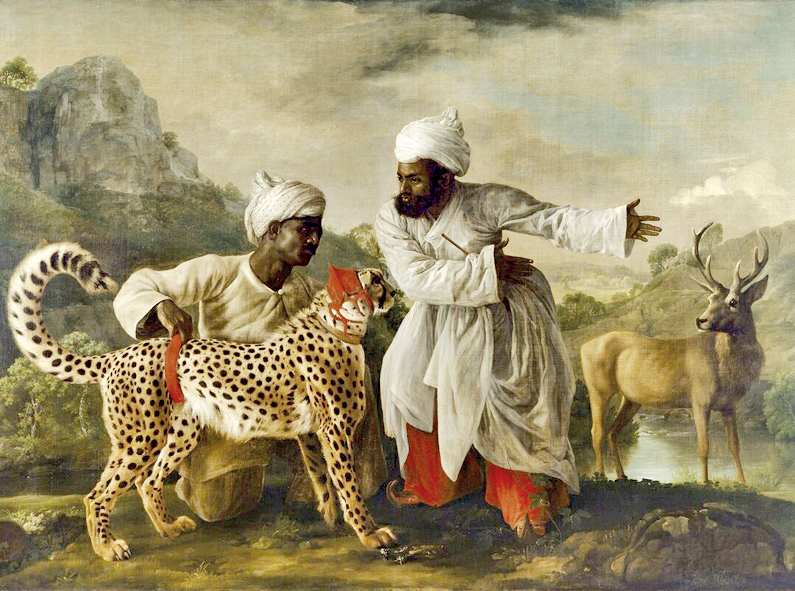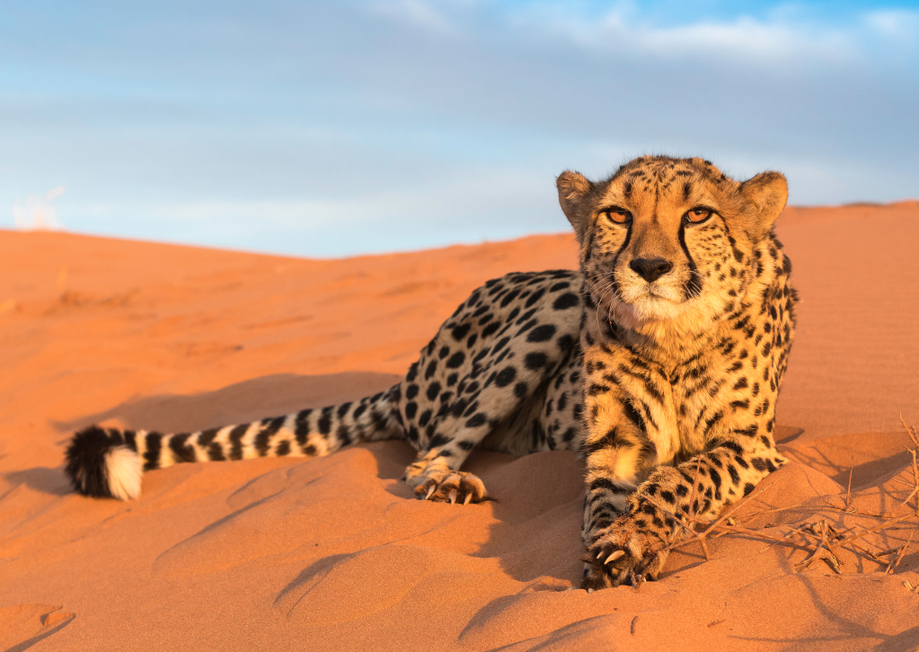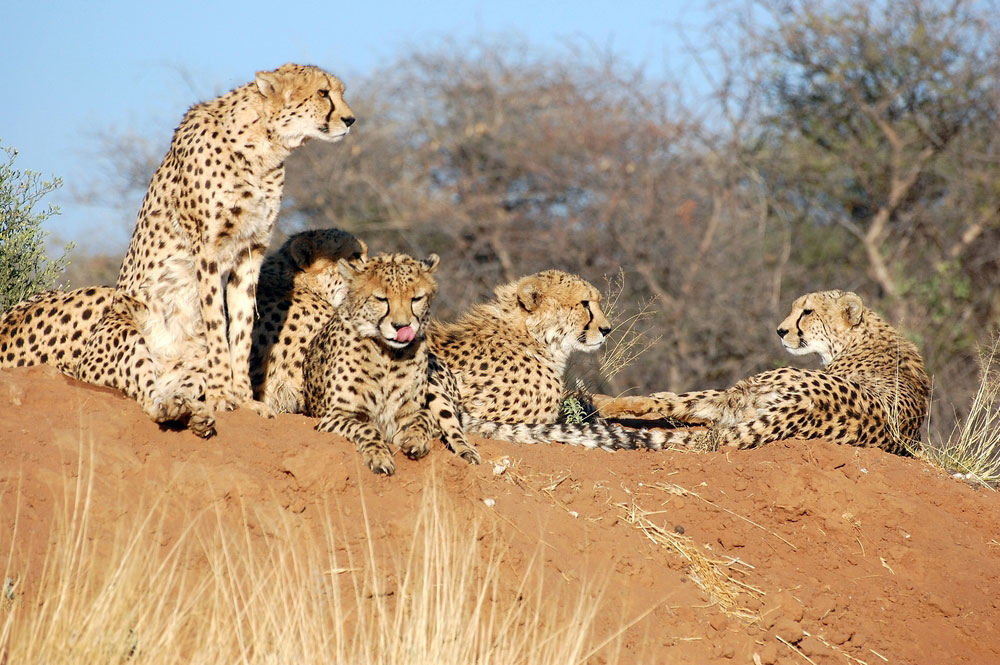In January this year, the Supreme Court of India reversed its objection to the proposal to bring cheetahs from southern Africa to select sites in India. In 2013, the same august body had ruled against the advisability of the plan. The reasons had been both pragmatic and intellectual.
Some felt this could not be a priority. Another body of opinion, drawing on the book, Exotic Aliens in India — the lead author of which is the celebrated and reputed tiger photographer, author and conservationist, Valmik Thapar — went a step further. The cheetah was not Indian but, like the wattle or eucalyptus today, an exotic.
They argued the animal was not ever native to India and those in the wild had been descendants of animals that had escaped captors, principally Turk and Mughal rulers of yore. Any attempt to get them in would be playing havoc with the preservation of natural ecosystems.
The court has side-stepped that debate. Cheetahs come in two sub-species and the one from Asia is in dire straits. There being only a few dozen Asiatic cheetahs in Iran in three small scattered populations, those from South Africa and Namibia will have to do. These can now be introduced after careful evaluation of sites and conditions by a three-member committee.
The case of the cheetah is significant, for it was on the verge of extinction by the time the Indian Board for Wildlife met in 1952 in the Lalitha Mahal in Mysore. It was promptly accorded protection, along with the pink headed duck. The latter, once common in jheels and bheels across north India, was gone by the mid-1930s when a local landowner, who shot probably the last, reported it in a journal.
Three cheetahs were gunned down in Korea, Bastar in 1947. Ramanuj Pratap Deo shot them from a jeep. Reports of cheetahs persisted till two decades hence as shown in the meticulous research of Divyabhanusinh.
Of all these, the cheetah did command attention. And why not? The fastest animal on four legs, it was even classed as a falcon by authors of the Baz Namah. It ran so fast, observers felt that it almost flew. From the time of the Chalukyas through the Mughals and into the 1930s, they were caught, tamed and kept.
They earned their keep by bounding after antelope and deer. Shahu Maharaj of Kolhapur, well known as a social reformer, was so fond of fresh venison that he took along his cheetahs to Delhi during the imperial durbar. They served him well running down antelope near the Yamuna. As such herds were thinned out by hunting and the plains cultivated, the cheetah too was doomed.
Ironically, the spotted cat well known to authors of Sanskrit and Persian texts vanished in India just when there were early signs of action in the government and the small but influential community of faunal conservation.
It was not alone. Among the few mammals to disappear was the shou or the Sikkim stag. There was the Javan rhino of the Sunderbans, shot from land and from boats, its forest loving cousin, the Sumatran rhino, and the banteng, a wild ox from the valley of Manipur.
The idea to bring back the cheetah is not new but it was given shape only in 2009. In part it took a cue from Project Tiger, not just a programme to save tigers in the wild but to secure the wider penumbra of creatures that share its mostly forested habitat. The cheetah was seen as an umbrella to secure grasslands.
Research, most notably by Jayashree Ratnam of the National Centre for Biological Sciences, shows that the savannah, or dry grassland, was once far more prevalent across north, west, central and even parts of south India than once believed. These were classified as poor quality forest by timber-hungry foresters who literally missed the grass for the trees.
Archival records actually show cheetahs killed for rewards in the late 19th century as far south as Tirunelveli in the deep south of Tamil Nadu. But British bounty hunting and ‘sport’ took a huge toll. Patches of land with acacia trees and clumps of grass, hares and black buck remain intact in small sanctuaries there to this day.
There is no doubt that the challenges are all too real and the record of protecting grasslands in India is poor. Assam with Kaziranga is a leader in this respect, but the dry grassland, till recently, has been seen as waste. It is a biome of critical importance if only for the rich corpus of drought resistant grass species, nature’s gift of germ plasm for science to explore.
But the practicalities apart, there is the all too familiar refrain of aliens and exotics. The cheetah, as much as birds familiar to a schoolchild like the bulbul or trees celebrated in lore like the Babul (acacia), is part of an ecotype. This bunch of plants and animals, including the gazelle and honey badger and the lion and cheetah, had a range from southern Africa through central and west Asia into India. This Ethiopian realm, as bio geographers call it, did not come to halt at the borders of India (which did not exist at the time).
Nature does not recognize human-made borders. The insistence on cheetahs as alien (even if they were descendants of runaways from Mughal menageries) raises a piquant question.
Ecosystems as much as human societies are dynamic. They are a mosaic of populations in flux. Most DNA-based studies now show the tiger evolving in southern China and the lion in southern Africa. Fossil findings keep being made but both probably came into the sub-continent within the last 100,000 years.
Hominids in India are estimated to have been around anywhere from one to 1.5 million years ago and Homo sapiens 40,000 to 60,000 years ago. All these dates are subject to debate and, one hastens to add, revision. Movement, not stasis, is nature’s way.
The point is simple: branding an animal or a plant as alien or exotic is a political as much as a biological choice. There is, indeed, reason for serious concern, as with eucalyptus trees from Australia replacing mixed forests.
Ask yourself a question. How long does a species have to live in a land before it ceases to be alien? How many generations have to pass by before a species becomes native? Should we judge animals (or people) by origins? Should it apply to those with centuries or millennia of presence in a land?
In the late 1930s, Nazi Germany made an all-out effort to breed the auroch, extinct since 1627 in the Polish forest. Auroch-cattle hybrids were located to help breed “pure” aurochs. ‘Alien’ versus ‘native’ had consequences for animals and humans alike. The obsession with purity and past origins was intertwined and inseparable.
Genuine respect for diversity needs to take forward the best in our shared present. Nature’s king (and queen) of speed may yet help blend science with compassion.
India could not save its cheetahs: but it may yet help us kindle a love for the mosaic of life.
The writer is a professor of history and environmental studies at Ashoka University and is the author of Nature and Nation













